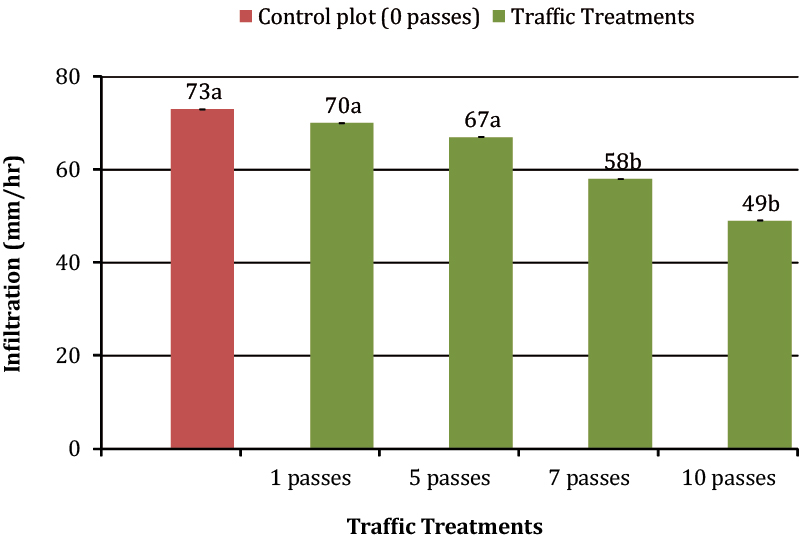Effect of traffic with a light-weight tractor on physical properties of an Aridisol soil in Almeria, Spain
Keywords:
soil carrying capacity, cone index, axle loadAbstract
The objective of this work was to evaluate the effect of repeated traffic with a light-weight tractor on the physical/mechanical properties of an Aridisol soil from eastern Almería (Spain). The soil has been used for almond (Prunus amigdalus L.) production for the past 29 years. A light modal tractor (≈15 kN overall load) and different traffic frequencies or treatments; namely, 0 (control, no traffic), and 1, 5, 7, and 10 passes, respectively, were used. The following variables were measured: cone Index (CI); bulk density (BD); total soil porosity (TSP); water infiltration into soil (I), and ruth depth (RD). The results showed that, only treatments 7 and 10 led to significant increases in CI and BD throughout the soil profile (0-450 mm). Changes in TSP in those treatments were consistent with changes in soil bulk density. No significant differences in RD were found when the tractor passed 1 or 5 times. All traffic treatments resulted in significant compaction in the topsoil layer (0-150 mm) and soil physical conditions that would be regarded as unsuitable for establishment of most arable crops.

Downloads
Published
Issue
Section
License
Aquellos autores/as que tengan publicaciones con esta revista, aceptan las Políticas Editoriales.


